As I left Zion National Park, I had only a few minutes of sunlight remaining. It was just enough time to visit a place I had missed during my other visits: the ghost town of Grafton, Utah.
It’s hard to imagine a more scenic spot for a ghost town. Grafton is located just a few hundred feet from Utah Route 9, but since it’s on the other side of the Virgin River, it requires a dirt-road detour and a few extra minutes of effort.
There isn’t a whole lot left in Grafton, Utah. The two buildings you see above are the most prominent. The schoolhouse/church was built in 1886, and served many purposes — including as a dance hall. The final classes were held in 1919. After that, the school shut down due to Grafton’s dwindling population. People started moving out of Grafton after 1906, when the Hurricane Canal was finished, making the town of Hurricane much more appealing.
Beyond the schoolhouse, the Alonzo Russell Home dates back to 1862. Alonzo lived here until his death in 1910, when his son purchased the home (for $200 and a cow). The final residents of the home moved out in 1945 — the year the town was officially abandoned.
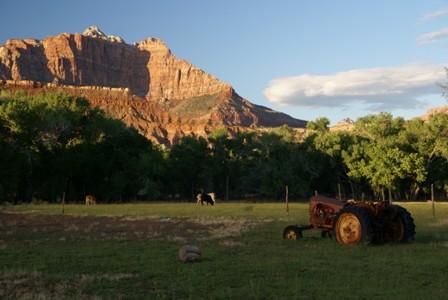
An old tractor sits in the field next to the Russell home, slowly rusting as it pays tribute to the Mormon (LDS) settlers who once worked the land here. The land is still in use, by a collection of cattle that you’ll find grazing nearby. All of Grafton is on private land, but permission is granted for anyone to walk around “downtown”.
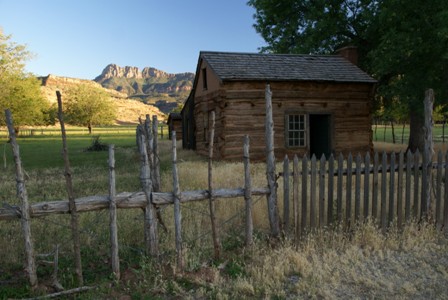
Louisa Marie Russell’s house is across the “street” from Alonzo’s house. Louisa was Alonzo’s wife, and he built the modest house for her between 1873 and 1879.
All three of these buildings are inside the fenced-in area at the end of the road that leads you into Grafton. There are also a couple of side roads to explore.
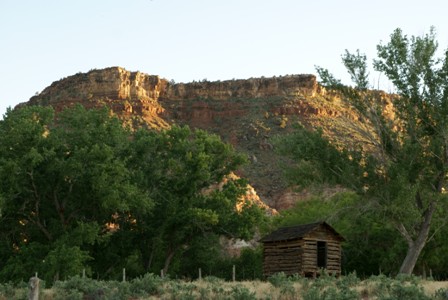
At the end of one of those roads, I could see a house, but I wasn’t close enough to photograph it. This small out-building was nearby, and a little easier to photograph.
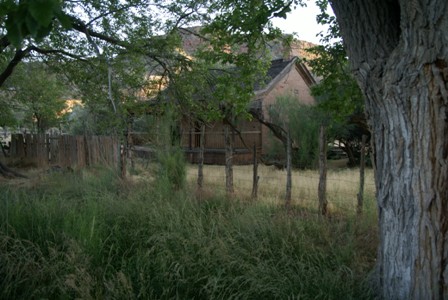
Back on the main road, you’ll pass the John and Ellen Wood Home, built in 1877. Just like the other buildings, it has undergone restoration.
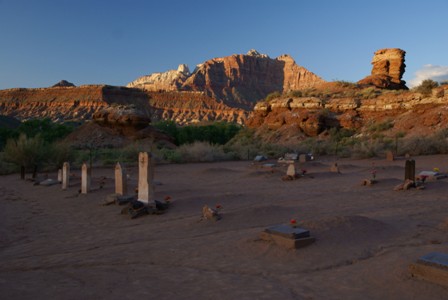
On the way out of town (but before you drive through the narrow pass through the rock wall), turn down a side road and pay your respects at Grafton’s Cemetery. In the late evening light, it’s an especially evocative place. Tombstones placed here remember early settlers who died, some of disease (like Diphtheria and Scarlet Fever), others by Indian attack. Increasing hostility by Native Americans in 1866 caused Grafton to be evacuated for a while, though farmers returned daily to tend their crops.
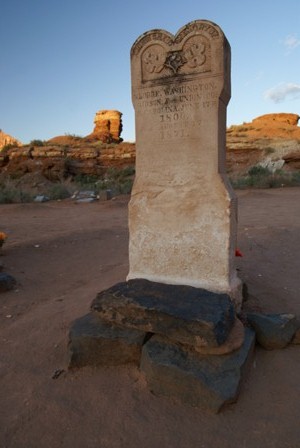
The tombstone of George Washington Gibson, 1800-1871.
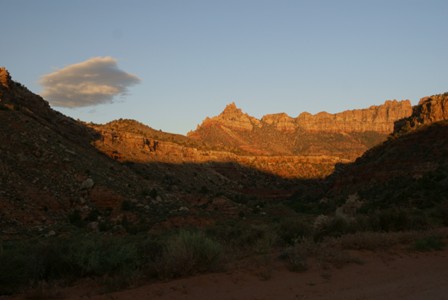
It was almost too dark to see anything else in the area, but I wasn’t ready to give up and head back to St. George. After all, this was the last stop on my vacation, and I wanted to make the best use of every minute. So, I set off on the Smithsonian Butte National Backcountry Byway — a nine-mile-long dirt road that cuts south to Utah Route 59.
The BLM classifies the Smithsonian Butte Byway as passable by 2-wheel-drive vehicles. The road I found…
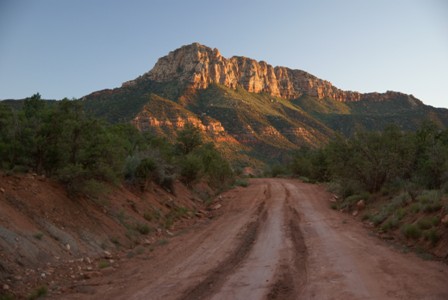
… was definitely rougher than that. I was driving an SUV (front wheel drive only), and about a half-mile up the road, I began to wonder if I was about to destroy my car in the final hours of my trip. The dirt was deeply rutted, very bumpy, and all-around unpleasant to drive. The scenery, of course, was the exact opposite.
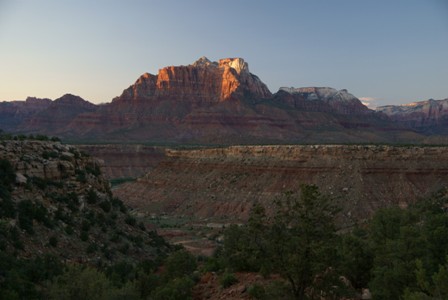
I only drove far enough up the Smithsonian Butte Byway to turn around, and take in this magnificent view, looking back towards Zion National Park. I wish I had gotten here 15 minutes earlier, when more of the mountains were still lit. If you have a car that can handle the rough road, it’s worth a brief detour just for this view.
Location
To find Grafton, Utah, turn on Bridge Road in Grafton. As soon as you’ve crossed the bridge, turn left onto Grafton Road (also known as 250 South). Grafton is at the end of the road; the turnoff to Smithsonian Butte Byway is about 1.5 miles from the bridge.
Day 10: St. George, UT to Las Vegas, NV
On Day 10, there was only one thing left to do: get back to Las Vegas to catch my early-afternoon flight. St. George is only about two hours away from Las Vegas, so it’s a good place to stay on the last night of a trip.
Drivelapse Video
Because I’ve driven this road so many times before, I didn’t stop to take any pictures along the way. Instead, I let the dash cam do all the work. So, as the final part of this trip, please enjoy the 1,000 mile-per-hour drive down I-15:

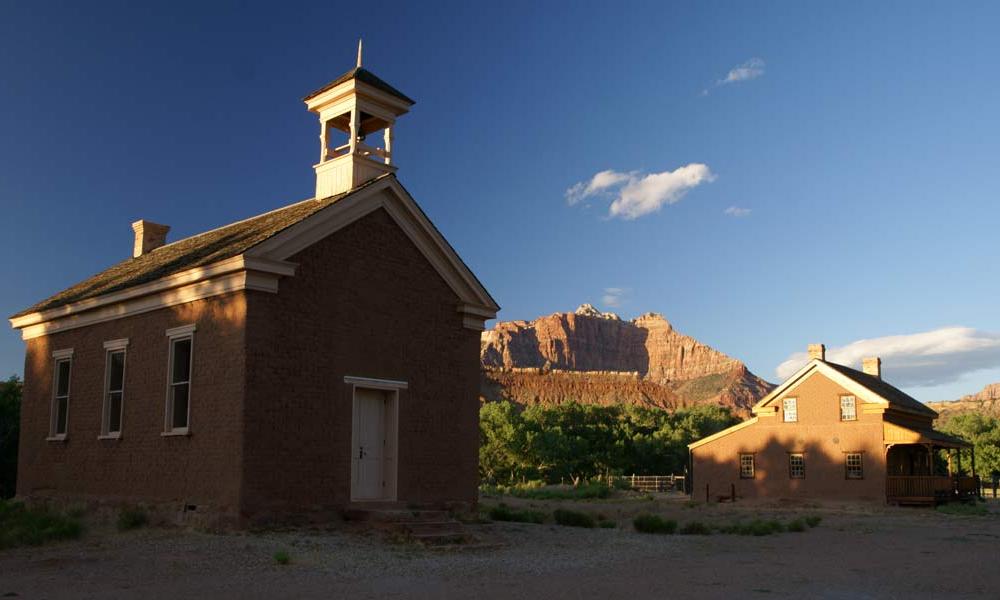
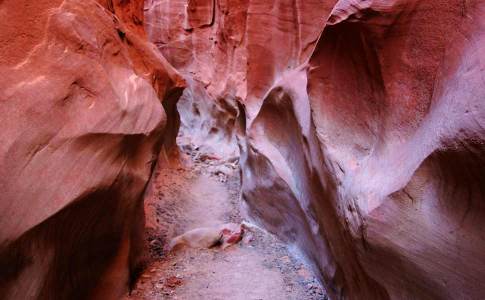
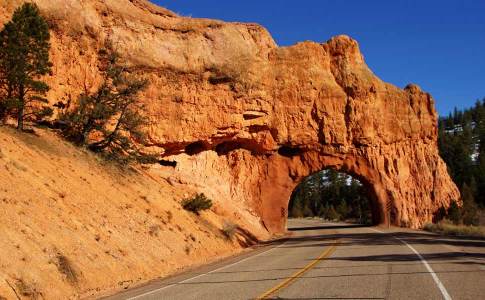
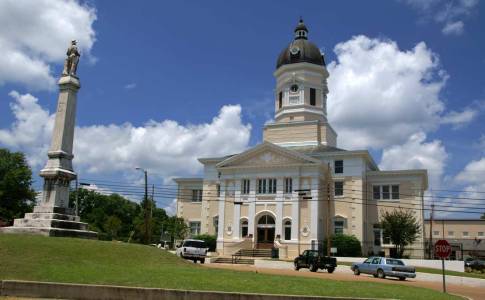
No comments